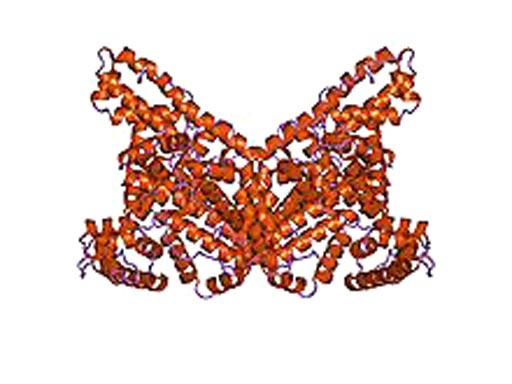Study Shows Varied Results from Different Methods of Measuring Albumin
By LabMedica International staff writers
Posted on 21 Feb 2017
A recent paper compared the accuracy of several different methods for determining levels of serum or plasma albumin, measurements, which are used to evaluate the nutritional status, kidney function, and fluid balance of dialysis patients.Posted on 21 Feb 2017
Investigators at the University of Virginia Health System and Virginia Commonwealth University used 24 testing methods offered by various companies to analyze pools that had been prepared from residual patient serum and heparin plasma from patients without renal disease, and serum from patients with kidney failure before hemodialysis. Albumin was measured in all samples and in ERM-DA470k/IFCC reference material (RM) by three immunochemical, nine bromcresol green (BCG), and 12 bromcresol purple (BCP) methods.

Image: A structural model of serum albumin (Photo courtesy of Wikimedia Commons).
Results revealed that two of three immunochemical procedures, five of nine BCG, and 10 of 12 BCP methods recovered the RM value within its uncertainty. One immunochemical and three BCG methods were biased versus the RM value. Random error components were small for all measurement procedures. Biases for plasma samples were generally higher than for serum samples for all method types. For most measurement procedures, biases were lower for serum from patients on hemodialysis versus patients without kidney disease.
“Nephrologists follow albumin results closely because the results are going to tell them if they need to do anything extra for these patients,” said contributing author Dr. David Bruns, professor of pathology at the University of Virginia Health System. “We know for a fact that this [albumin levels] correlates with mortality. National guidelines define what an acceptable range is and what is not acceptable.”
The investigators concluded that significant differences among immunochemical, BCG, and BCP methods compromised the interpretation of serum albumin results. Therefore, guidelines and calculations for clinical management of kidney and other diseases must consider the method used for albumin measurement until harmonization can be achieved.
The study was published in the January 2017 issue of the journal Clinical Chemistry.













